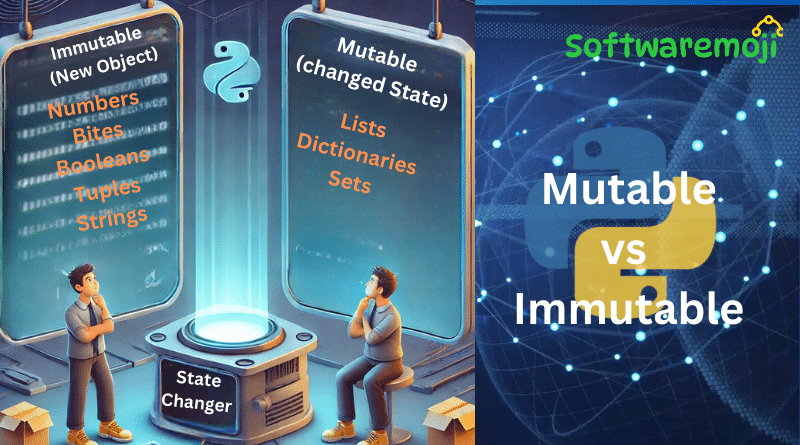
👉 Mutable vs Immutable Objects in Python with Examples
Mutable vs Immutable Objects in Python : Python objects are broadly categorized into two types: Mutable and Immutable. Understanding their differences is crucial for effective coding and memory management in Python.
👉What is a Mutable Object?
A mutable object in Python can change its state or content after creation. These objects are generally used to store collections of data and allow modification over time.
👉Examples of Mutable Objects:
- Lists
- Dictionaries
- Sets
👉Example Code for Mutable Objects:
mut_list = [1, 2, 3]
print(“Original list:”, mut_list)
mut_list[0] = ‘Python’
print(“Modified list:”, mut_list)
👉Output:
Original list: [1, 2, 3]
Modified list: [‘Python’, 2, 3]
Here, the original list changed without creating a new object.
👉ID Example for Mutable Objects:
mut_list = [1, 2, 3]
print(“ID before change:”, id(mut_list))
mut_list[0] = ‘Python’
print(“ID after change:”, id(mut_list))
👉Output:
ID before change: 140232556028800
ID after change: 140232556028800
The ID remains the same, indicating that the same object is modified.
👉What is an Immutable Object?
An immutable object cannot change its state or content once created. Any modification results in the creation of a new object.
👉Examples of Immutable Objects:
- Integers
- Strings
- Tuples
- Frozen Sets
👉Example Code for Immutable Objects:
a = 100
print(“ID before change:”, id(a))
a = 200
print(“ID after change:”, id(a))
👉Output:
ID before change: 9796256
ID after change: 9799456
Here, Python creates a new object instead of modifying the original.
👉Mutable vs Immutable Objects: Key Differences
| Aspect | Mutable Object | Immutable Object |
| Changeable | Yes | No |
| Thread Safety | Not thread-safe | Thread-safe |
| Memory Efficiency | May consume more memory | Efficient memory usage |
| Examples | Lists, Dictionaries, Sets | Integers, Strings, Tuples, Frozen Sets |
👉Mutable vs Immutable Objects in Python Dictionary Key Rules in Python
In Python, dictionary keys must be immutable. Attempting to use a mutable object as a key will result in an error:
a = [1, 2, 3]
dict_example = {a: ‘value’} # Raises TypeError: unhashable type: ‘list’
👉Exceptions in Immutability
Mutable vs Immutable Objects in Python : Python allows some exceptions where immutable objects can contain mutable elements. For example, tuples can contain mutable objects:
tuple_example = ([1, 2], ‘Immutable’)
print(“Before change:”, tuple_example)
tuple_example[0][0] = ‘Changed’
print(“After change:”, tuple_example)
👉Output:
Before change: ([1, 2], ‘Immutable’)
After change: ([‘Changed’, 2], ‘Immutable’)
Here, the tuple remains immutable, but the mutable list inside it gets modified.
